Unsung Heroes of the Revolutionary War
The College of Liberal Arts and the Department of History shine a light on some lesser-known American Revolutionary War heroes.

By Heather Rodriguez ’04
We all know about George Washington, Benjamin Franklin, and (thanks to an insanely popular musical) Alexander Hamilton. Their stories echo throughout all of our history books, and we are called to think of them every July 4. But what about Crispus Attucks, Polly Cooper, and Mum Bett? What roles did they play in the American Revolution?
“For a long time, the history of the American Revolution often revolved around well-known figures or decisive battles,” said Jennifer Wells, a doctoral student in the Department of History. “In the second half of the twentieth century, however, historical interpretations became more inclusive with the emergence of social history.”
In addition, she said, questions related to African Americans, Native Americans, and women are relatively recent, born from the social and political movements of the 1960s and 1970s.
“Rather than a static record of past events, historical interpretations change based on what new questions historians ask of the past,” Wells said.
And knowing about these unsung heroes is imperative to understanding the full history of this country.
“We should know more about these individuals because it reminds us that the United States has always been a diverse country with a heterogeneous history,” said Brian Rouleau, an associate professor in the Department of History. “Many different people of many different backgrounds fought for American freedom and helped to expand the meaning of words like liberty and equality. And because our country owes its founding to such a diverse cast of characters, we … must continue to ensure that the United States honors that debt and continues its commitment to the principles those brave individuals struggled to establish.”
With that in mind, read on to learn more about these heroes.
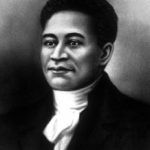
Crispus Attucks
Crispus Attucks: “In 1770, festering colonial discontent led to a confrontation between colonists and British troops in Boston. In the skirmish, colonists hurled snowballs and ridiculed British soldiers. The scene escalated into an armed altercation that resulted in the deaths of five Bostonians. Crispus Attucks, a multiracial sailor, was one of the victims. Heralded as “the first martyr of the American Revolution,” Attucks became famous after Paul Revere memorialized the event in his widely-circulated print, The Boston Massacre. Revere’s image of British troops firing mercilessly into a defenseless crowd of colonists lived on in colonial imagination, becoming an impetus for independence.” (Wells)
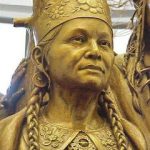
Sculpture of Polly Cooper on display at the National Museum of the American Indian
Polly Cooper: “Polly Cooper was an Oneida woman who trekked to Valley Forge with other Oneidas as part of a diplomatic mission to aid the Continental Army during the brutal winter of 1777–1778. Cooper brought large quantities of corn to help feed the troops, and she remained there to teach them how to prepare the corn. Washington attempted to pay Cooper, but she refused. However, as a token of gratitude, Martha Washington gave Cooper a shawl, hat, and bonnet.
The Oneidas’ efforts underscored the alliance between the Oneida people and patriot forces. Throughout the war, Oneidas also secured the borderlands of New York and Pennsylvania against British raids.” (Wells)
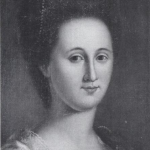
Esther de Berdt Reed
Esther de Berdt Reed: “In 1780, Esther de Berdt Reed established the Ladies Association, an organization meant to raise funds to assist American soldiers. In addition, her broadside publication, ‘The Sentiments of an American Woman,’ called on women across Philadelphia to support patriot troops.
Eventually, the Ladies Association canvassed Philadelphia’s streets in pairs, collecting funds to send to Martha Washington. The project crossed state lines, reaching New Jersey, Maryland, and Virginia. Their interstate efforts culminated in a total of $340,000 that Reed hoped would be distributed to the soldiers directly. Washington, however, wanted the money be used to supply troops with new shirts.
Unfortunately, Reed did not live to see her vision realized. She died in September 1780 after an epidemic swept through Philadelphia. Sarah Franklin Bache, the daughter of Benjamin Franklin, and several others took over the association and directed the shirt-making process. Upon receiving the homespun clothing, Washington thanked the women for their patriotism.
Through her fundraising efforts, Reed played a fundamental role in mobilizing women to aid the war for independence.” (Wells)
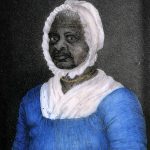
Elizabeth Freeman
Elizabeth Freeman (a.k.a. Mum Bett): “Mum Bett was born a slave during the colonial era, but by the end of the Revolution had fought for (and eventually won) her freedom. After suffering a horrific assault with a heated fire shovel at the hands of her master in 1780, Mum Bett decided to sue in state court for her freedom. She contacted a lawyer and decided to test whether or not slavery was still legal in Massachusetts, given the state constitution’s express guarantee of personal liberty. A local court heard her case and ultimately agreed to set her free, after which she took the name Elizabeth Freeman. Mum Bett’s brave stand against slavery eventually led to a 1781 Massachusetts Supreme Court ruling that decreed slavery was no longer legal in the state. Her fight for freedom during the Revolutionary War helped to inspire others, and represents an important beginning in the much larger (and longer) struggle against slavery and racial injustice in America.” (Rouleau)
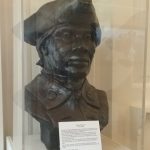
Sculpture of Billy Lee on display near Valley Forge National Historical Park
William ‘Billy’ Lee: “William (Billy) Lee was an enslaved man who served as George Washington’s valet for nearly twenty years. Some scholars speculate that Washington’s relationship with Lee during the Revolutionary War contributed to the president’s growing disgust with slavery and his decision to no longer buy or sell enslaved men and women. Lee was the only enslaved person immediately freed by Washington’s will upon his death.” (Wells)
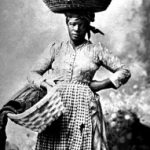
Mammy Kate
Mammy Kate: “Born an enslaved woman in Georgia, Mammy Kate rescued her master, Stephen Heard, after British soldiers captured and imprisoned him. In 1779, under the guise of a washerwoman, Mammy Kate offered her services to British officers. Mammy Kate eventually asked if she could also wash Heard’s clothes. British troops agreed, and for several weeks, Mammy Kate entered Heard’s prison cell with clean garments in a large basket balanced on top of her head that she exchanged for dirty ones. But one day, rather than its usual contents, Heard squeezed himself in the basket. Fantastically strong, Mammy Kate strolled away with troops none the wiser.
Once outside British surveillance, Mammy Kate lowered the basket, and the two fled on horses that she had secured. Upon his rescue, Heard freed Mammy Kate and gave her a small plot of land and a home. Although Mammy Kate lived the rest of her life in obscurity, the memory of her fortitude lived on in the stories of later generations.” (Wells)
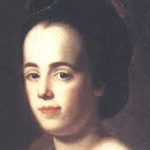
Judith Sargent Murray
Judith Sargent Murray: “Murray was a Massachusetts woman who saw the Revolutionary era as an opportunity to challenge the prevailing gender hierarchy. She believed that just as the colonists fought for liberty and equality, women should assert their own rights. The Revolution became, for her, an opportunity to push back against the idea that men were inherently superior to women. In a famous and influential pamphlet titled ‘On the Equality of the Sexes,’ Murray argued that women should be afforded the same educational opportunities granted to men, and that women would have an important role to play in helping to promote patriotism in the newly founded United States. Her ideas became part of the foundation for the larger fight to grant American women voting rights and civil liberties.” (Rouleau)
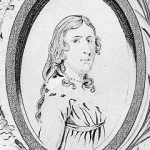
Deborah Sampson
Deborah Sampson: “Born the daughter of a poor farmer, Deborah Sampson disguised herself as a man and enlisted in the Continental Army at the age of twenty-one. Under the alias of Robert Shurtleff, Sampson demonstrated bravery in battle, working side-by-side with other soldiers. Sampson went to extreme measures to remain undetected. In one instance, she extracted a bullet from her thigh by herself. However, after almost two years of service, a severe fever rendered Sampson unconscious, and a doctor discovered her secret.
In 1783, Sampson received an honorable discharge from the army. In the following years, she married and had children. Sampson gained acclaim after Herman Mann wrote The Female Review (1787), a detailed account of her participation in the war. Later in life she became a performer, discussing her military experiences (often dressed in uniform) to audiences across the fledgling nation.” (Wells)
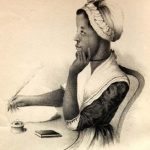
Phillis Wheatley
Phillis Wheatley: “Born in Gambia around 1753, slave traders captured and sold the child into slavery. A slave ship transported her from West Africa to Massachusetts, where John Wheatley, a tailor in Boston, purchased her.
John and his wife quickly realized Wheatley’s intellectual acumen and encouraged her to learn the classics as well as English literature. In 1765, she published her first poem in a local newspaper. Prominent figures soon recognized Wheatley’s talents, and she won acclaim on both sides of the Atlantic, becoming the first African American woman to publish a book of poems. John emancipated Wheatley in 1773.
Wheatley supported the revolutionary cause, and her poem ‘His Excellency General Washington’ (1776) extolled Washington as a beloved American hero. Wheatley was also an outspoken critic of slavery and used her poetry to voice her abhorrence. Wheatley’s talent and passion provoked a nationwide debate about slavery in America–while she and others pushed America to live up to its founding ideology of freedom for all.” (Wells)
Other notable heroes:
